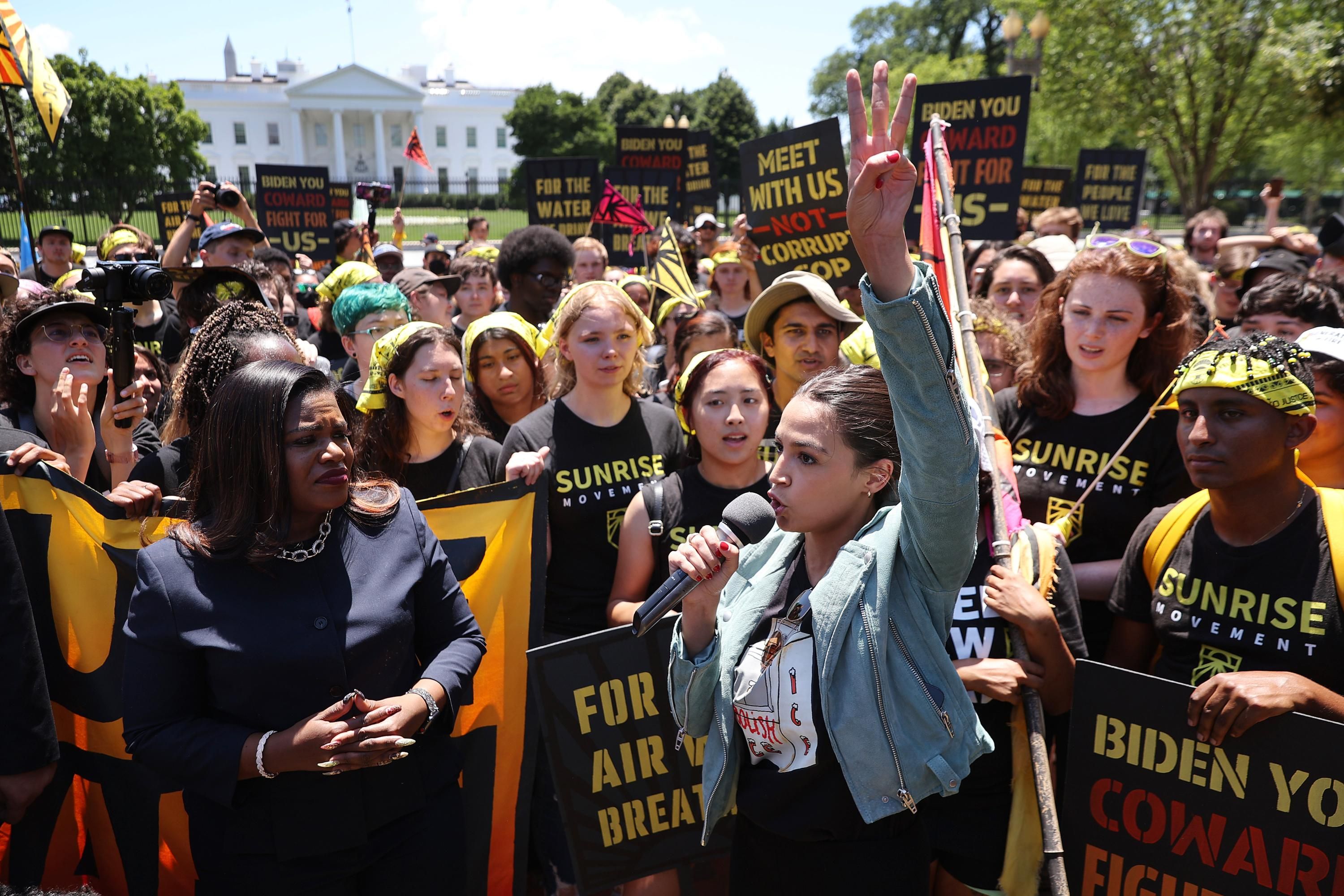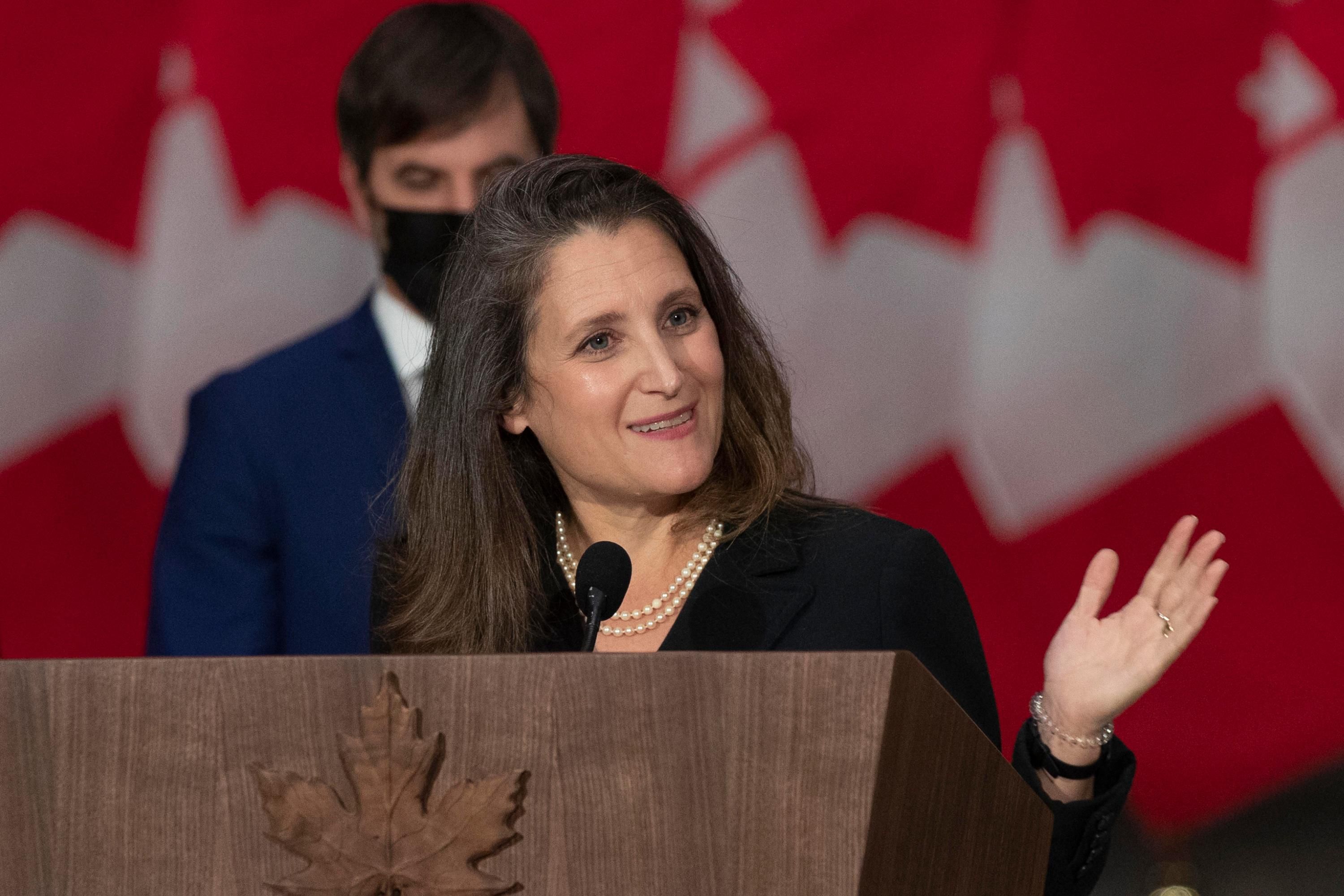"We need to act now, and that means making sure politicians understand the urgency of this crisis."

Rep. Cori Bush (D-Mo.) (L) and Rep. Alexandria Ocasio-Cortez (D-N.Y.) rally with hundreds of young climate activists in Lafayette Square on June 28, 2021 in Washington, D.C. (Photo: Chip Somodevilla/Getty Images)
JAKE JOHNSON
Dozens of progressive advocacy organizations launched a new campaign on Monday with the goal of pushing congressional candidates and incumbent lawmakers to embrace the Green New Deal and eschew funding from the powerful fossil fuel industry.
Known as the Green New Deal Champions Pledge, the new initiative aims to set "a new bar of what it means to fight for climate justice in Congress" by pressuring candidates and current representatives to back a specific slate of legislation that includes:
The Green New Deal Resolution led by Rep. Alexandria Ocasio-Cortez (D-N.Y.) and Sen. Ed Markey (D-Mass.);
The Green New Deal for Cities led by Rep. Cori Bush (D-Mo.);
The Green New Deal for Public Schools led by Rep. Jamaal Bowman (D-N.Y.); and
The End Polluter Welfare Act led by Rep. Ilhan Omar (D-Minn.) and Sen. Bernie Sanders (I-Vt.).
The pledge also requires signatories to reject campaign contributions larger than $200 from oil, gas, and coal industry executives, lobbyists, or political action committees.
"We need to act now, and that means making sure politicians understand the urgency of this crisis."
"The Green New Deal Champions effort provides an exciting opportunity to advance a transformative agenda to end the fossil era, help working people, and catalyze a just energy transition," said Collin Rees of Oil Change U.S., one of nearly 50 groups involved in the new campaign.
"Rejecting fossil fuel money and committing to these key bills to phase out fossil fuels and build an equitable clean energy future are now clear requirements for politicians claiming the mantle of 'climate leadership,'" Rees added. "With dozens of critical primary and general elections this year, we'll see which candidates and elected officials are truly willing to stand up to Big Oil and Gas' lies and fight for our communities."
Dozens of Democratic candidates for U.S. Congress have already signed the pledge, including Greg Casar and Jessica Cisneros in Texas, Nina Turner in Ohio, and Summer Lee in Pennsylvania. The candidates joined Ocasio-Cortez, Bush, Sanders, Omar, Markey, Bowman, Rep. Ayanna Pressley (D-Mass.), Sen. Elizabeth Warren (D-Mass.), Rep. Mondaire Jones (D-N.Y.), and more than a dozen other current members of Congress in backing the initiative.
"The Green New Deal is about jobs, justice, and dismantling systemic racism that's poisoning the lungs and futures of Black and Brown people in St. Louis and all across the country," Bush said in a statement Monday. "We need to act now, and that means making sure politicians understand the urgency of this crisis. I'm proud to be part of an effort to hold people in positions of power accountable to the solutions we know are needed to address environmental racism, confront the fossil fuel industry, and realize true climate justice."
The pledge was released as President Joe Biden's Build Back Better proposal, which includes around $550 billion in renewable energy investments over the next decade, remains stalled in the Senate due to the opposition of Republicans and Sen. Joe Manchin (D-W.Va.), a close ally of the fossil fuel industry.
Manchin, an outspoken opponent of the Green New Deal despite its popularity among U.S. voters, is reportedly pushing fellow Democrats to pursue an "all-of-the-above" approach to climate policy that includes "some concessions related to oil and gas drilling in the Gulf of Mexico and natural gas exports."
The New Republic's Kate Aronoff argued in a column Monday that "the irony of this moment is that while the Green New Deal's legislative prospects look about as bleak as they ever have, the case for them has never looked better."
"More than 65 percent of likely voters support Green New Deal measures for cities, public housing, and schools despite their still minuscule support in the House and Senate, recent polling from Data for Progress found," Aronoff noted. "And in addition to the steady drumbeat of climate disasters and sobering studies released since the Green New Deal was first unveiled, the invasion of Ukraine has made a new case for massive investments in renewables and energy efficiency."
"For now, Green New Deal advocates aren't even close to calling the shots in Congress," she added. "Meanwhile, world events continue to make the case for the policies they support."
Related Content

Groups Rip 'Climate-Wrecking' Biden Plan to Boost US Gas Exports to Europe
In the 2022 midterm elections and beyond, proponents of the new pressure campaign are hoping to translate strong public support for Green New Deal policies into a larger coalition of climate champions in Congress, which is currently awash in oil and gas money and filled with lawmakers who are financially invested in fossil fuel companies.
"As fossil fuel corporations destroy our communities and profit off of working families at the gas pump, our government has yet to pass climate legislation that meets the moment of crisis," Varshini Prakash, executive director of the youth-led Sunrise Movement, said in a statement Monday. "And yet, support for the Green New Deal has never been greater."
"That's why we're launching Green New Deal Champions, because we need members of Congress and elected officials to fight as hard as they can for the Green New Deal," said Prakash. "We must pass the climate bills that make the GND a reality—the GND Resolution is our North Star and the GND bills help us get there."
Our work is licensed under Creative Commons (CC BY-NC-ND 3.0). Feel free to republish and share widely.

